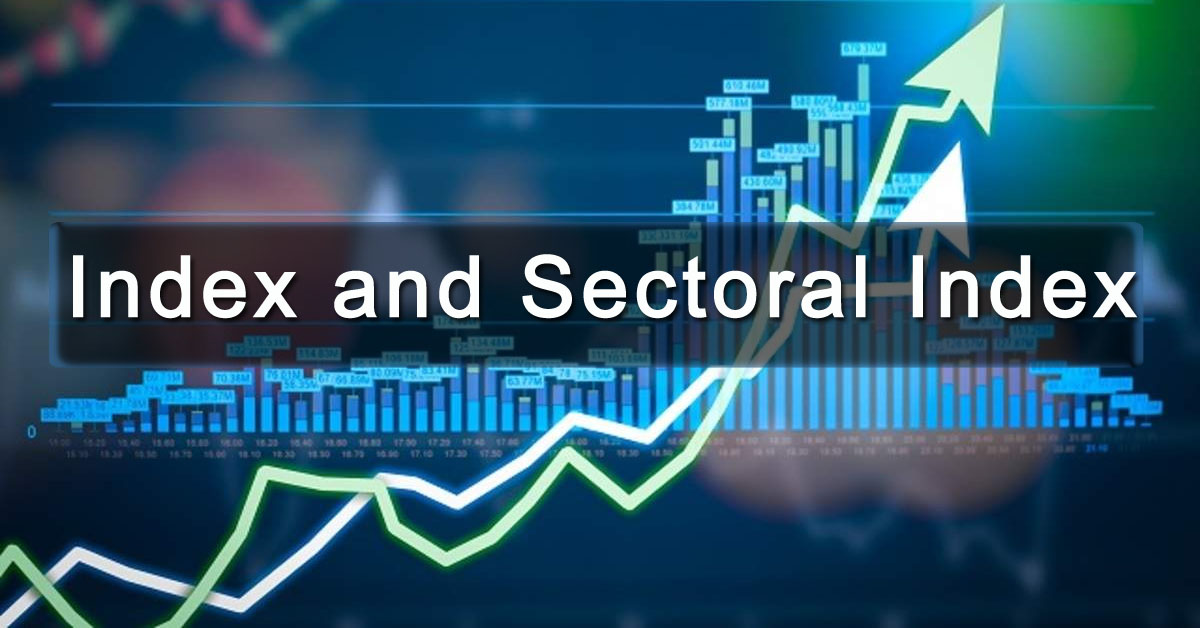
By Vishweshwar HS, www.showmytrade.com
More than 5,000 stocks/shares are listed on the Bombay Stock Exchange (BSE). And around 2,000 stocks/shares listed in the National Stock Exchange (NSE). Some stocks trade with a substantial quantity, and remaining stocks traded a few volumes every day.
To identify a broader market movement, Exchange has created a collection of companies into a group called Index. The Index comprises top companies in market capitalization and other criteria, covering most top sectors of the economy. The Index helps us to identify the broader market movement and also sectorial market movement.
The Index is a statistical indicator that measures changes in the economy in a broader market or sectorial benchmark. In the case of financial markets, an index is a portfolio of securities that represent a particular market or a sectorial market. Each Index has its calculation methodology and is usually expressed in terms of a change from a base value.
The National Stock Exchange (NSE) has 50 stocks in the Index called Nifty 50. It represents 50 stocks of top market capitalization/leaders of 13 sectors of the economy.
In 1995, the base value for Nifty was 1000. The current market price of Nifty around 12000 means stocks in the Nifty basket is grown from 1000 to 12000 points now!. Every day, the Index is calculated from the previous day’s price.
Nifty is calculated by the “Free-float market capitalization” methodology. The market capitalization is calculated by multiplying the market price of the share (a current market price or CMP) with the number of outstanding shares. Free float market capitalization is calculated by multiplying the free float stocks with the market cap.
The Bombay Stock Exchange (BSE) has 30 stocks in the Index called SENSEX.
In 1978-79, the base value for Sensex was 100 points. The current market price of Sensex is around 40000 points means stocks in the Sensex basket are grown from 100 to around 40000 points now!.
Similarly, The Metropolitan Stock Exchange of India Limited (MSE) has 40 stocks in the Index called SX40.
Apart from the broader market Index, Exchange also has Sectorial Index that captures the movement in such sectorial stocks.
Some of the NSE sectoral indexes include Nifty Bank Index, Nifty Consumer Durables Index, Nifty Financial Services Index, Nifty FMCG Index, Nifty IT Index, Nifty Media Index, Nifty Metal Index, Nifty Oil & Gas Index. etc
Information: The Index reflects the general market mood at any given point — the broader Index represents the country’s economic conditions. A stock market index moving up indicates people are optimistic, that future is looking good. Same way, if the stock market index is down, people are pessimistic about future prospects. The Index is a barometer of the economic and positive and negative sentimental aspects of the investor!
Benchmarking: For all the trading or investing activity that one does, there should be a yardstick to measure the performance. Let’s say Nifty50 went up by 5%; your portfolio has gone up 10%. We can tell you have beaten the benchmark. Instead, if your portfolio is up by only 3%, you underperform the benchmark Index. Thus Index helps us to benchmark the performance of the stock market.
Trading: Trading on the Index is probably one of the most popular uses of the Index. The majority of the market participants trade in the Index. It is convenient to take a broader call than an individual stock. It helps especially you the general direction of the market but doesn’t know individual stocks movement in that Index.
The Index can trade through futures and options known as derivatives.
Portfolio Hedging: Investors usually build a portfolio of securities. A typical portfolio contains 10 – 12 stocks with a long-term perspective. In the short-term, if the stock price goes adversely, they can hedge their positions using Index.
When one asset class is long (buy first) and short on another asset class (futures), it is called hedging. Another asset class protects one asset class loss.
The Index is one of the best products in the hands of Investors and Traders. It is the average value of up and down stocks in that Index. It is a barometer of positive and negative sentiments. It helps both take the directional and hedging call.
Kindly share your comments below. Any information regarding the Index needed will add in the next update.
Thanks for reading! Good Earning!
